A Genuine Work Of Art Johannes Vermeer,
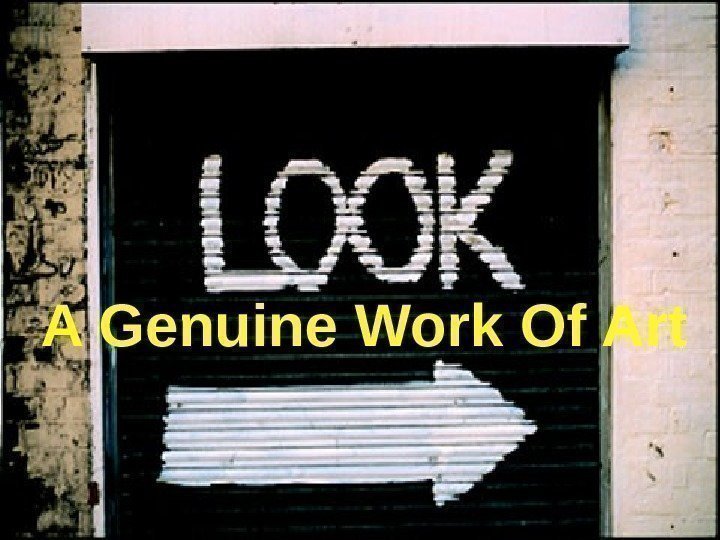
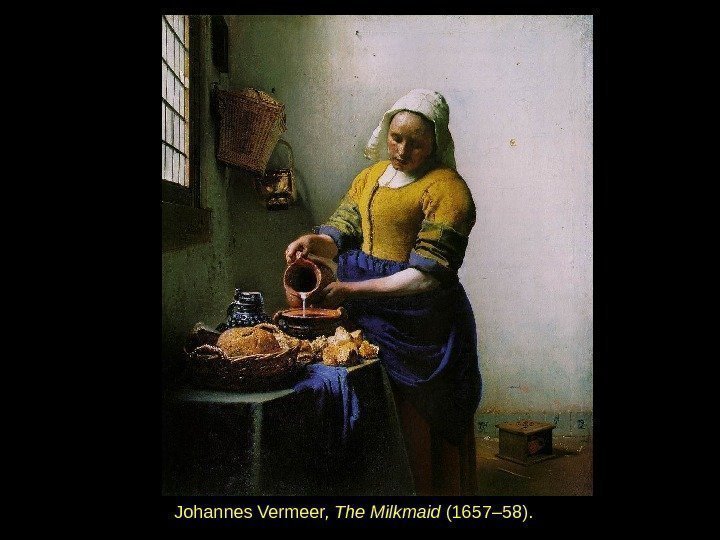
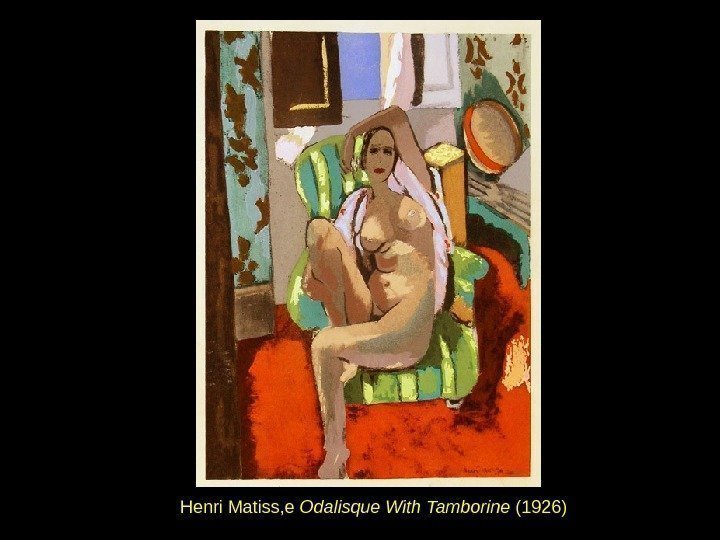
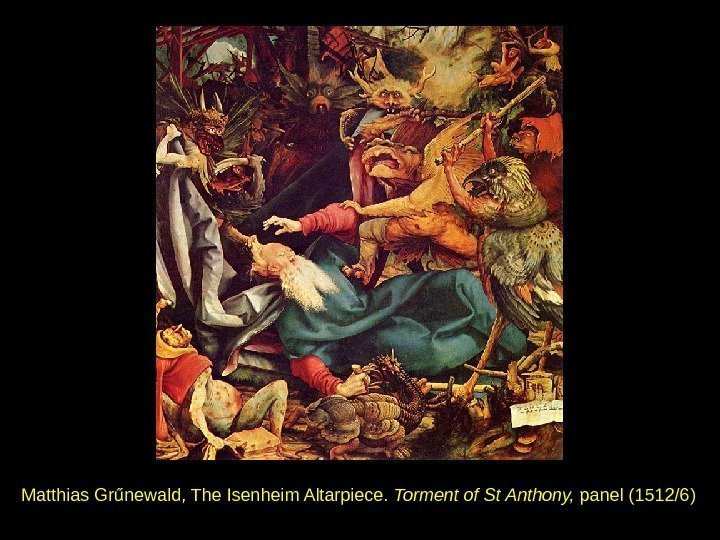
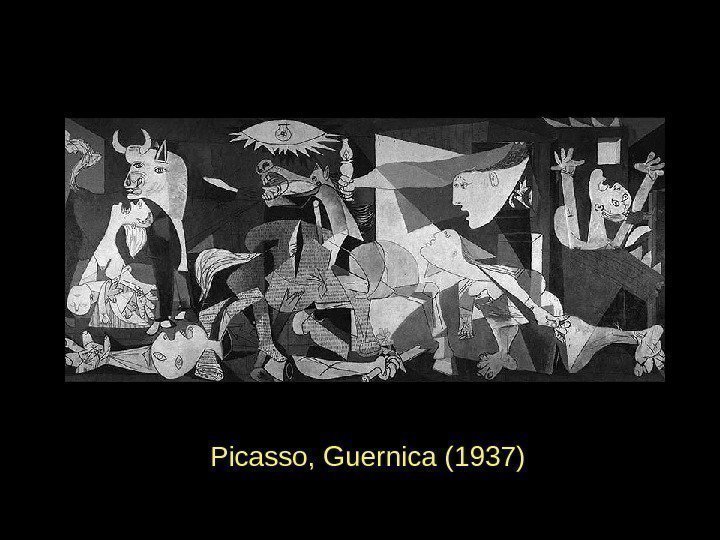
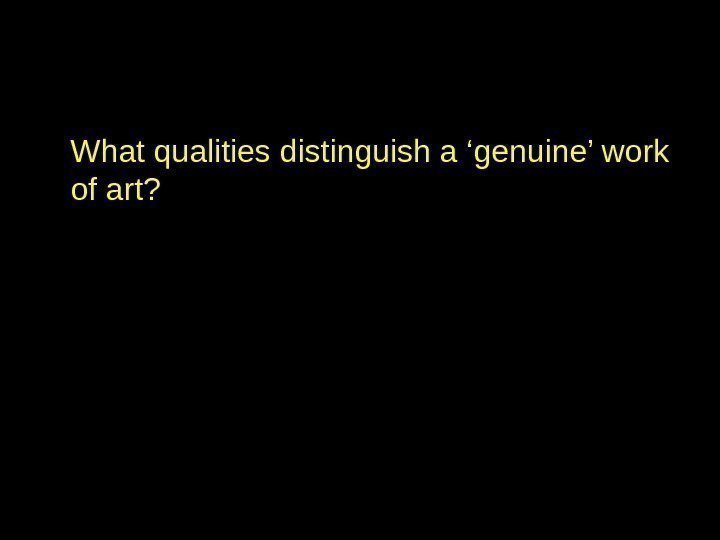
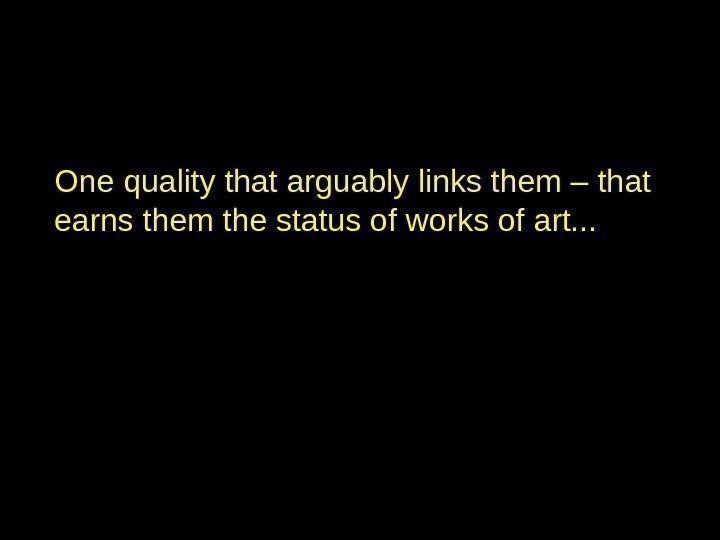
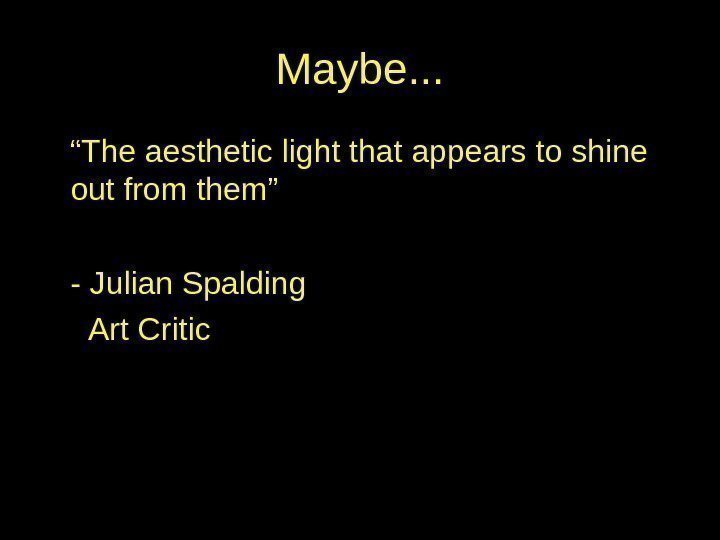
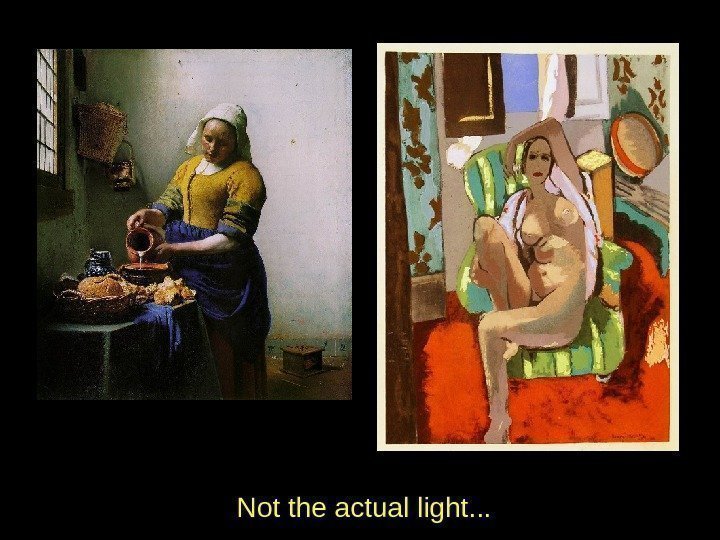
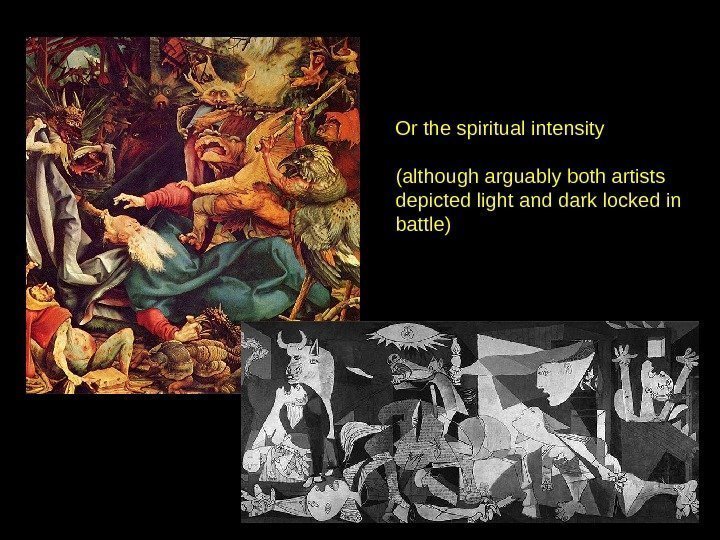
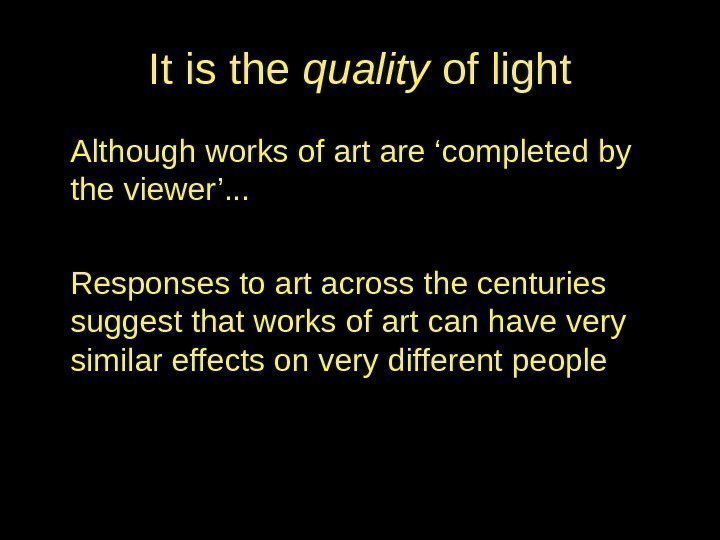
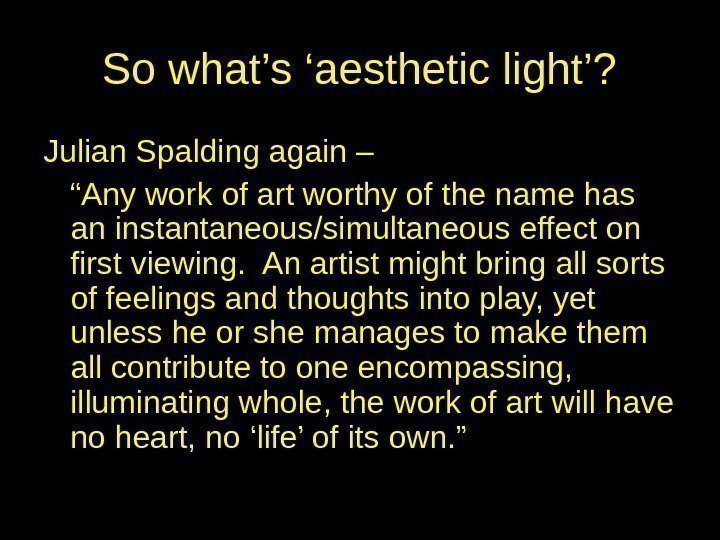
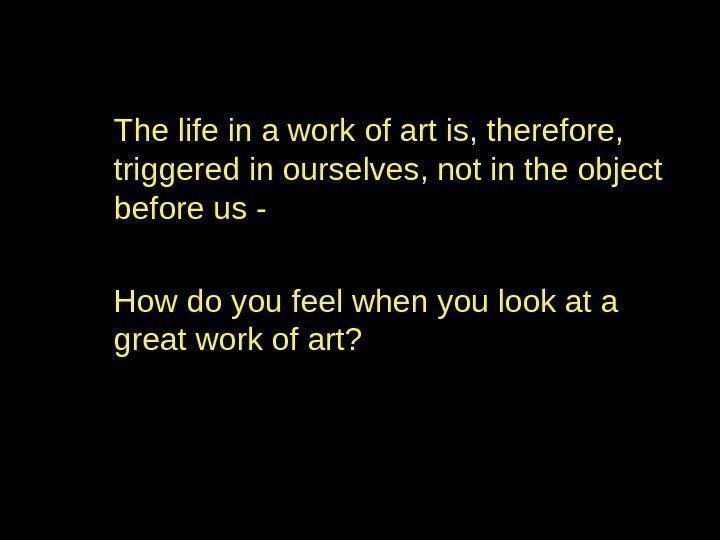
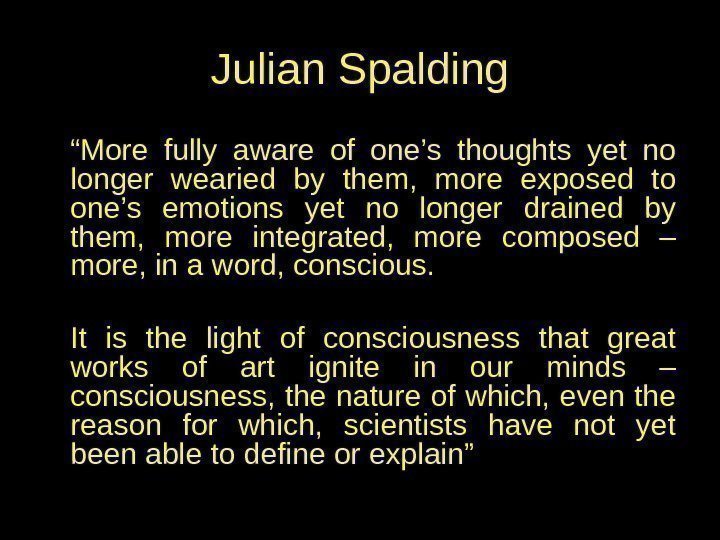
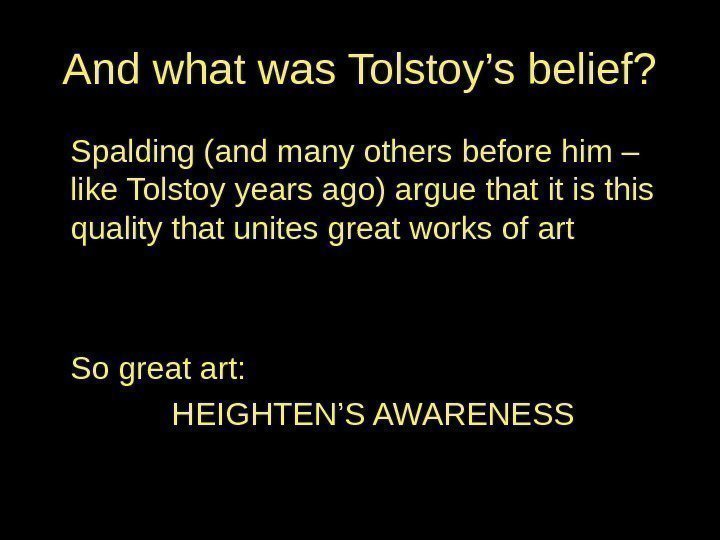
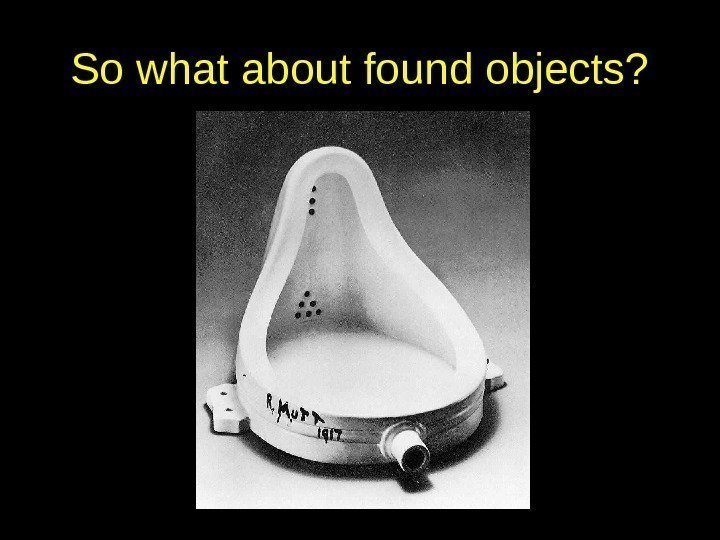
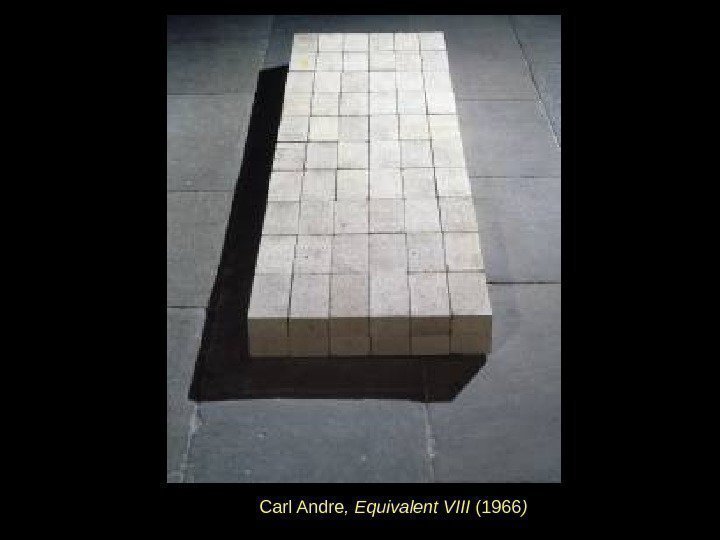
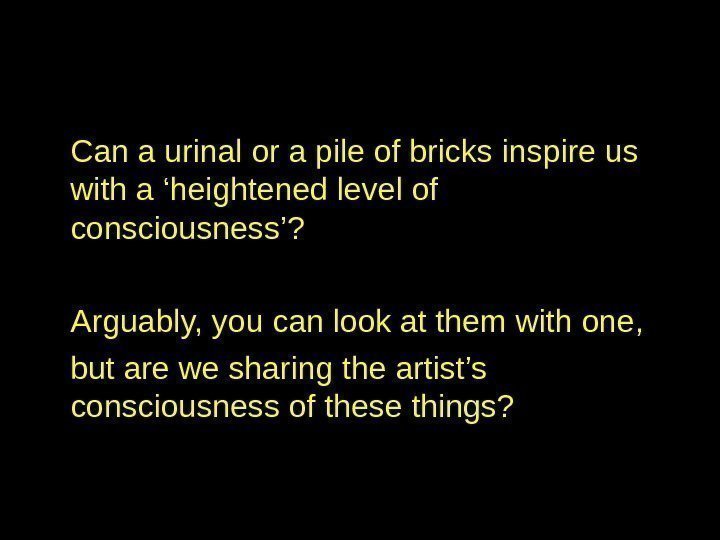
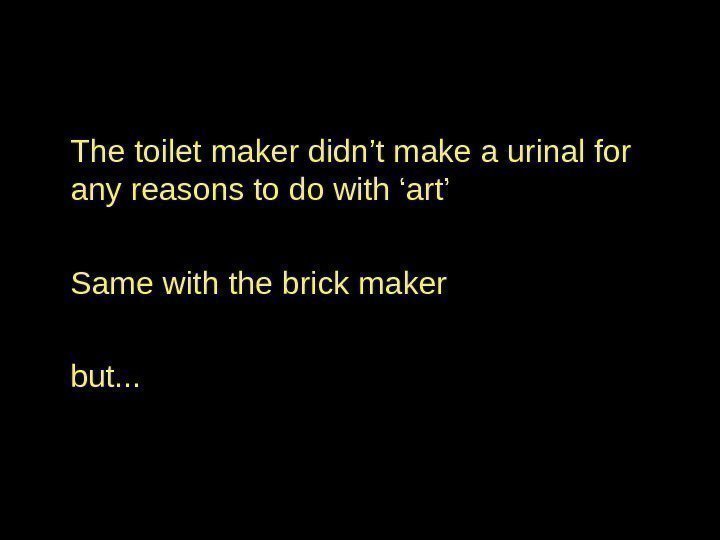
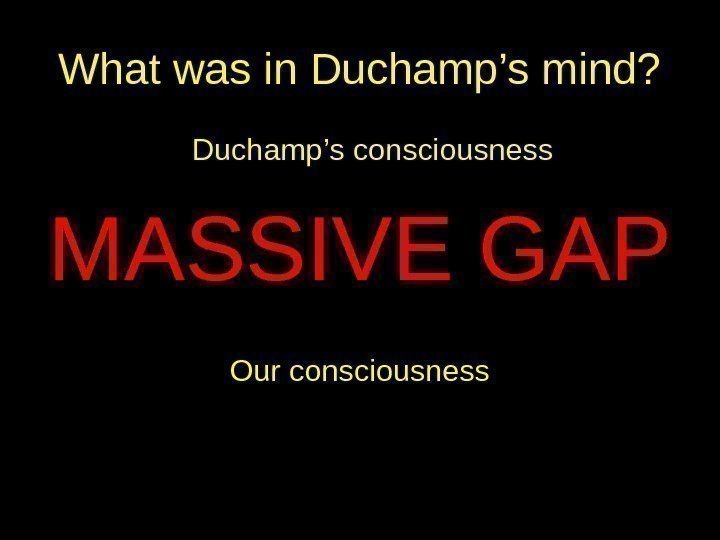
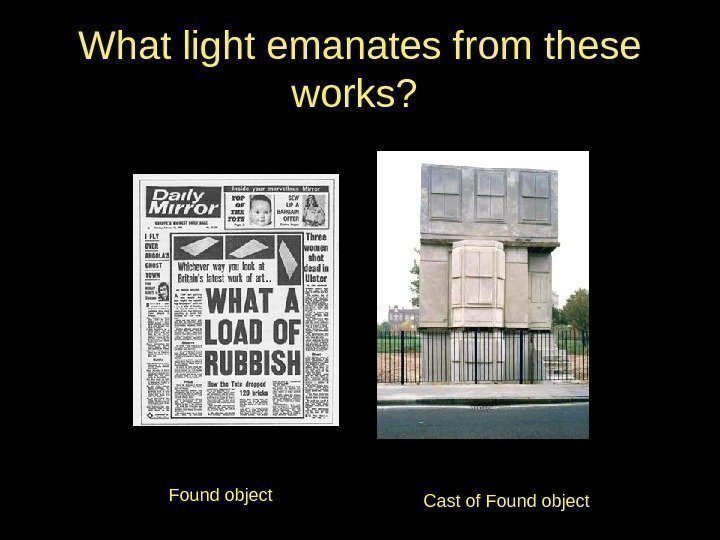
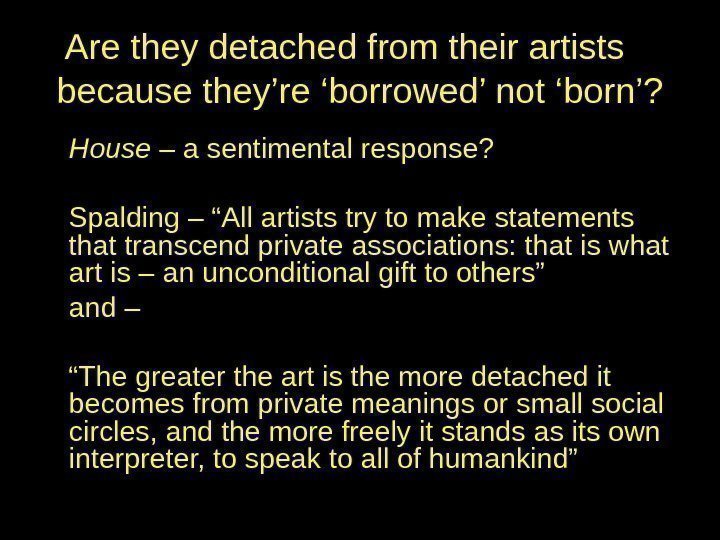
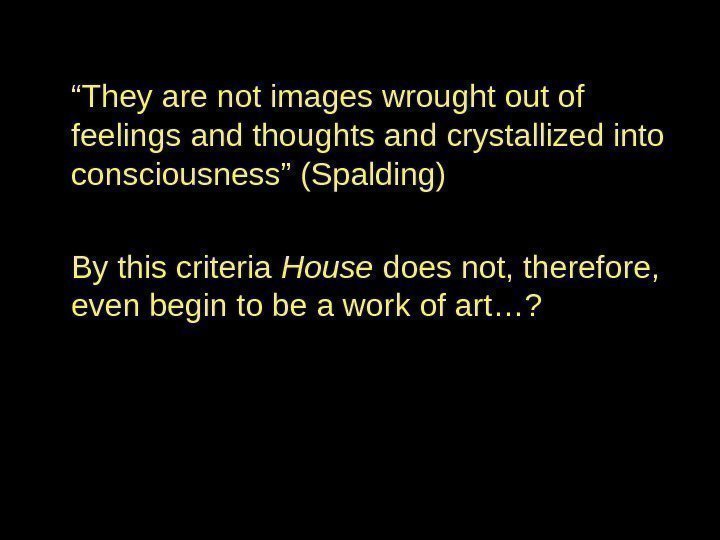
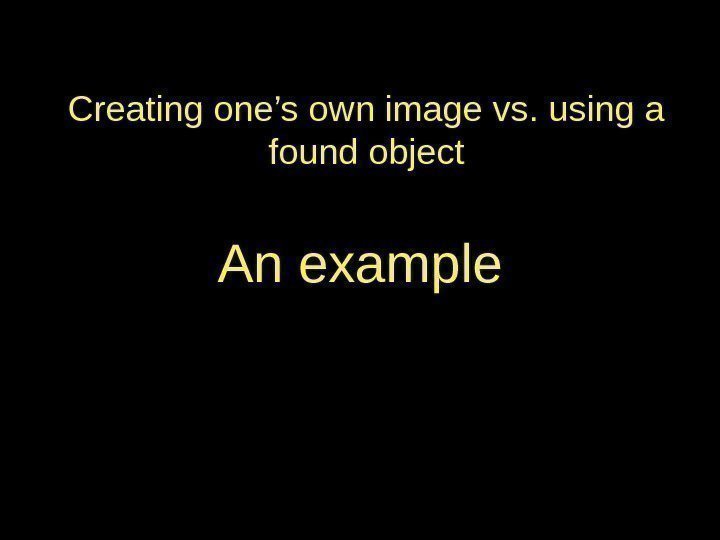
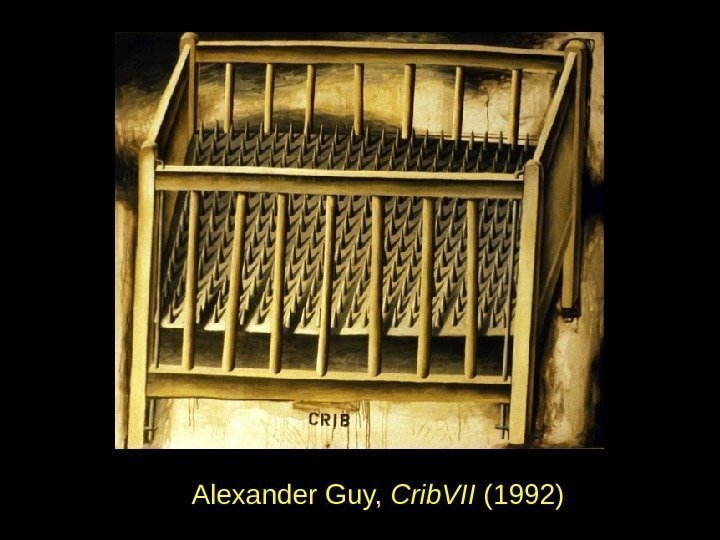
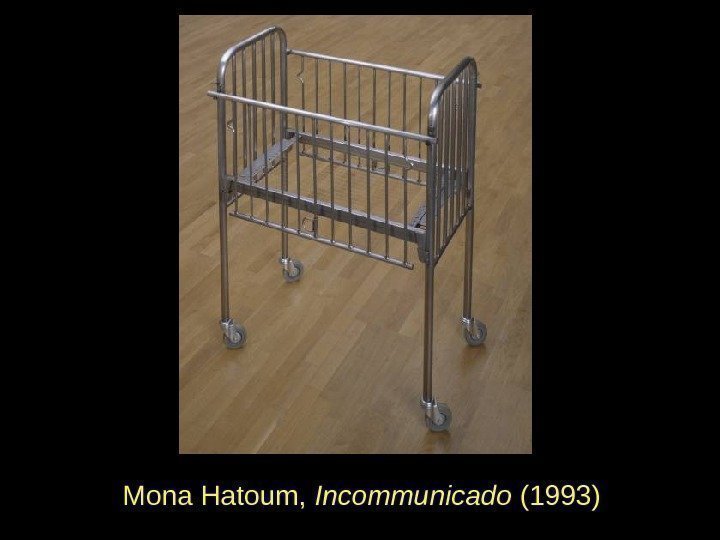
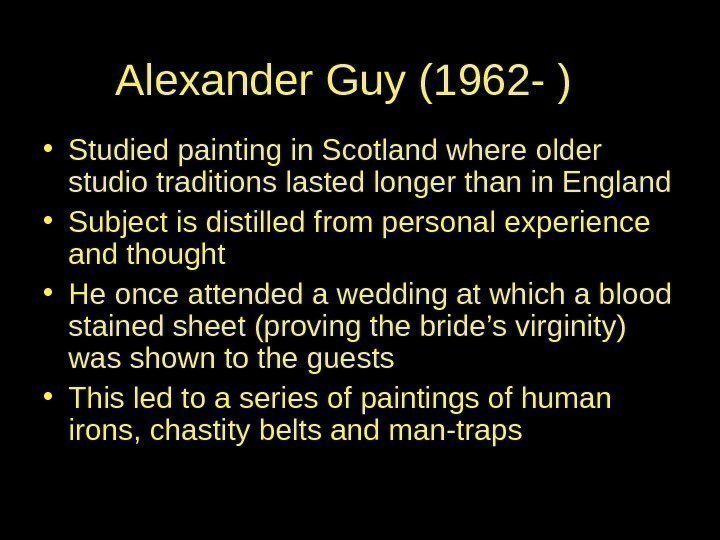
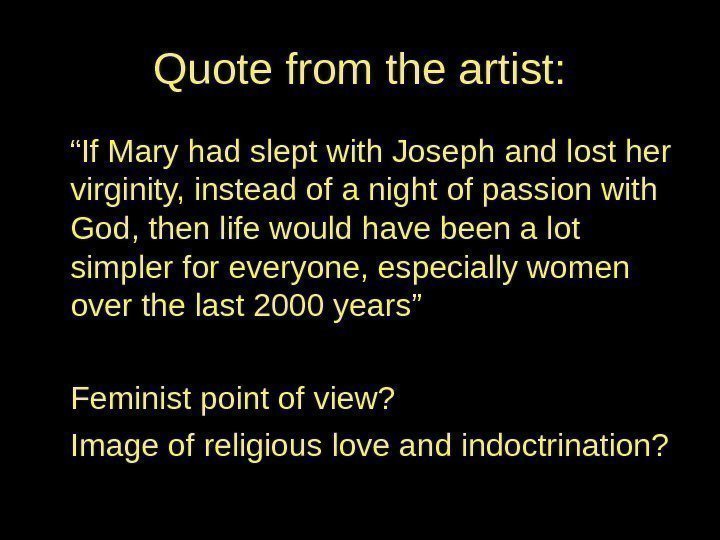
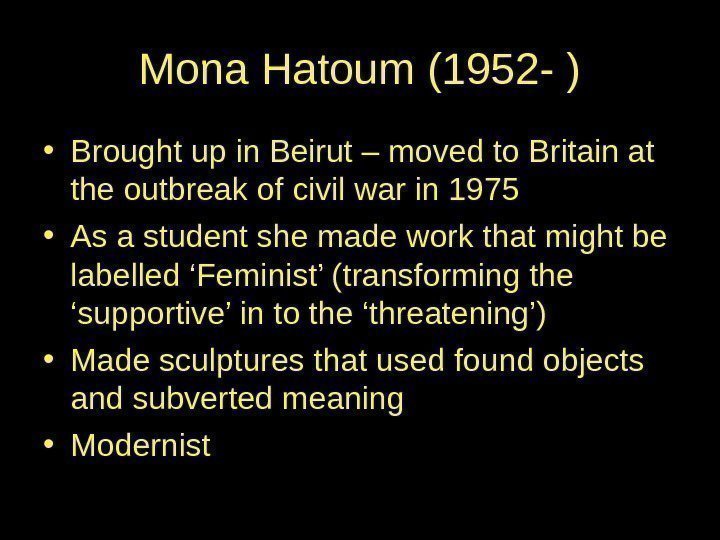
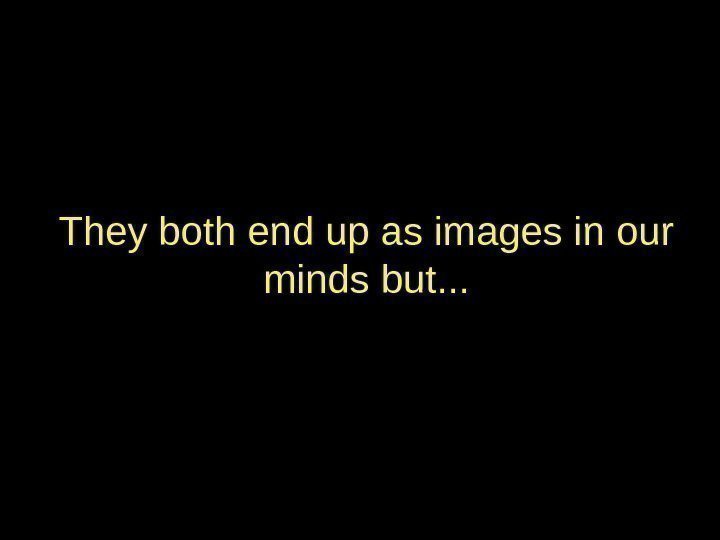
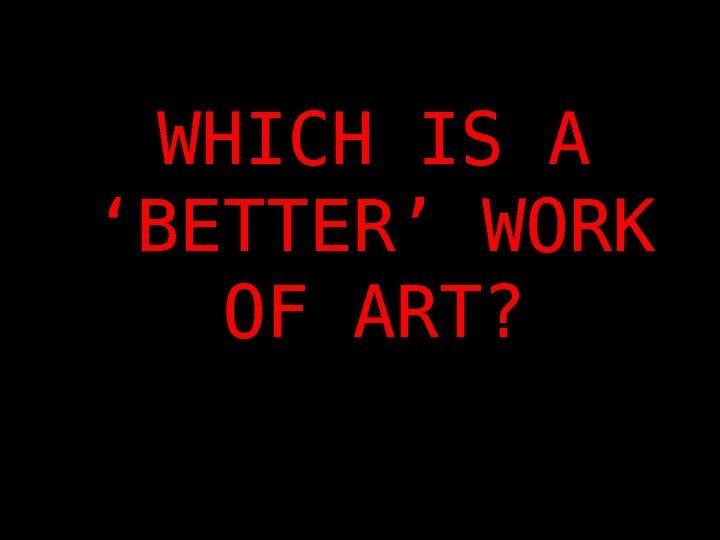
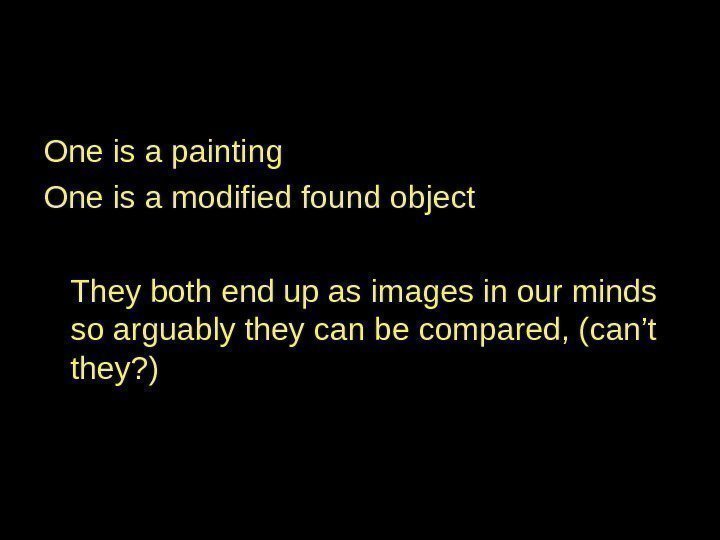
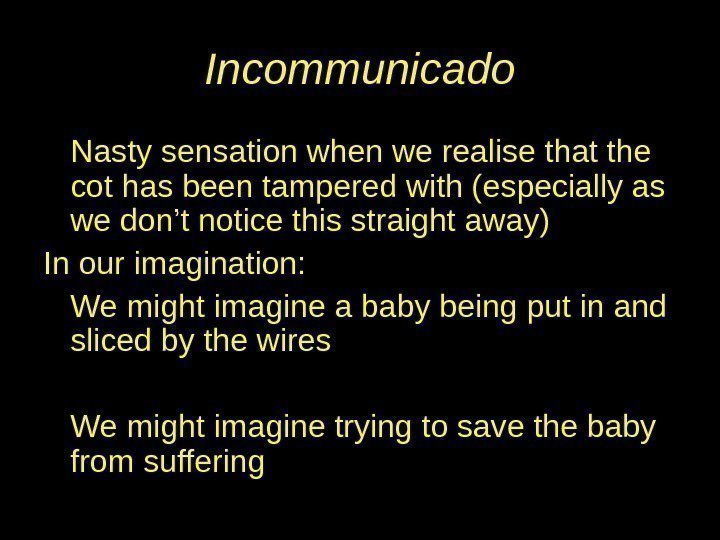
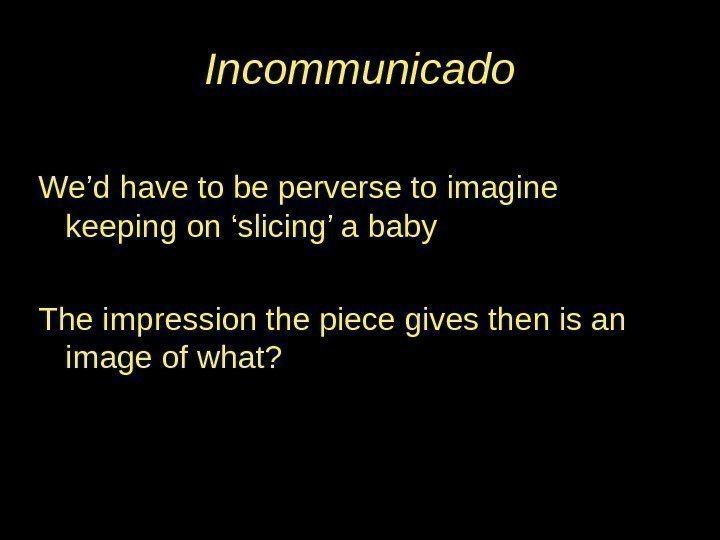
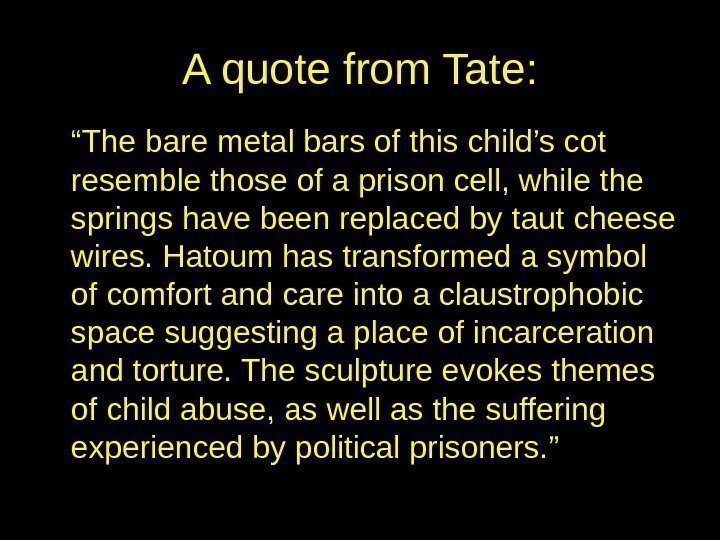
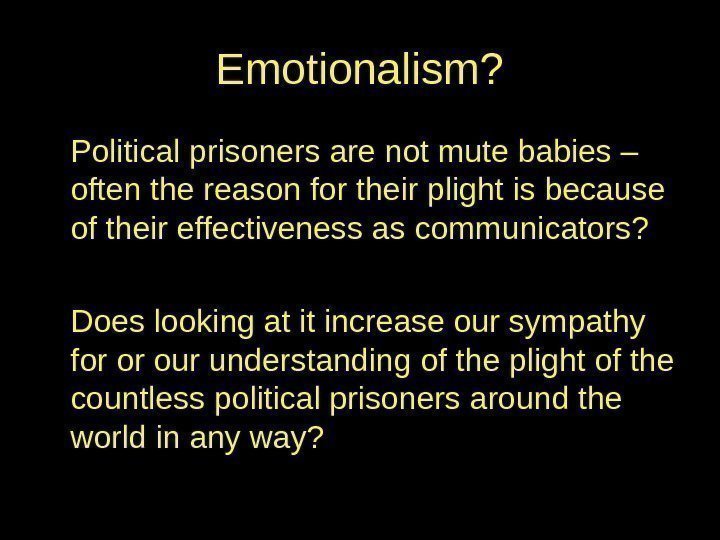
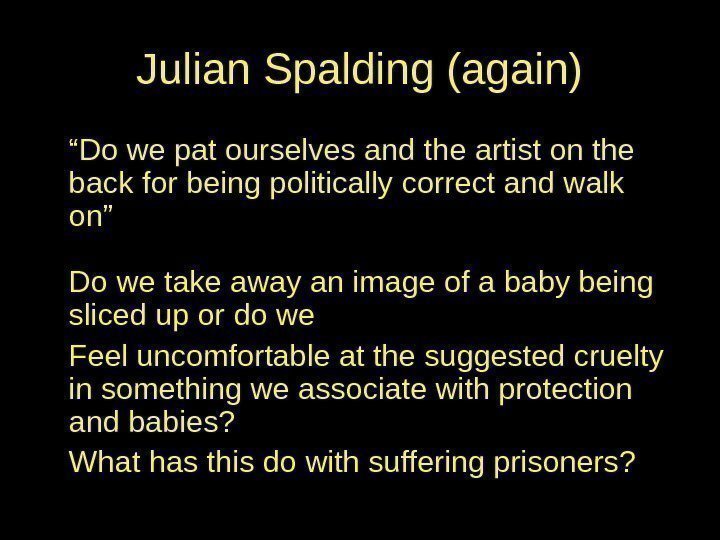
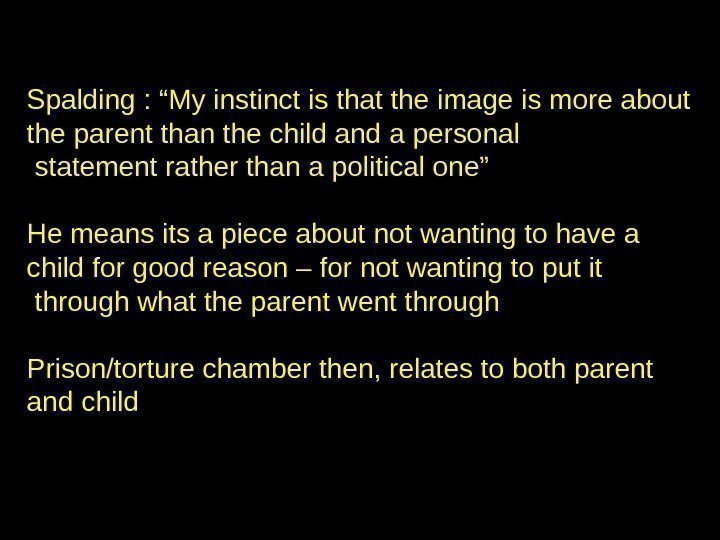
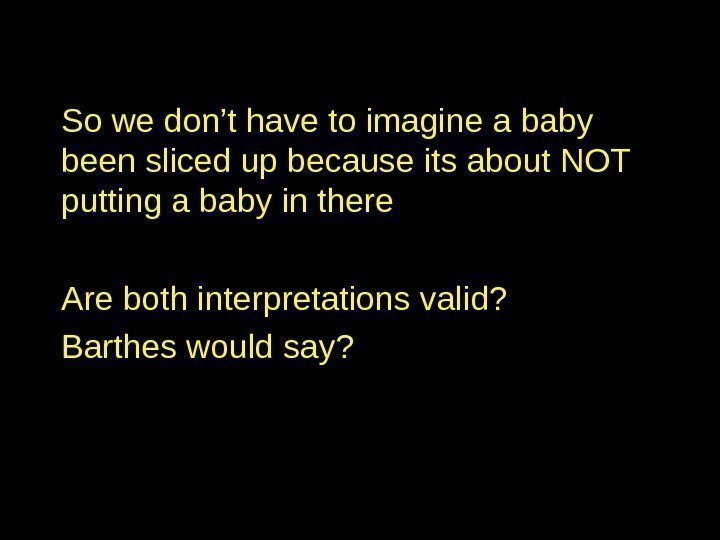
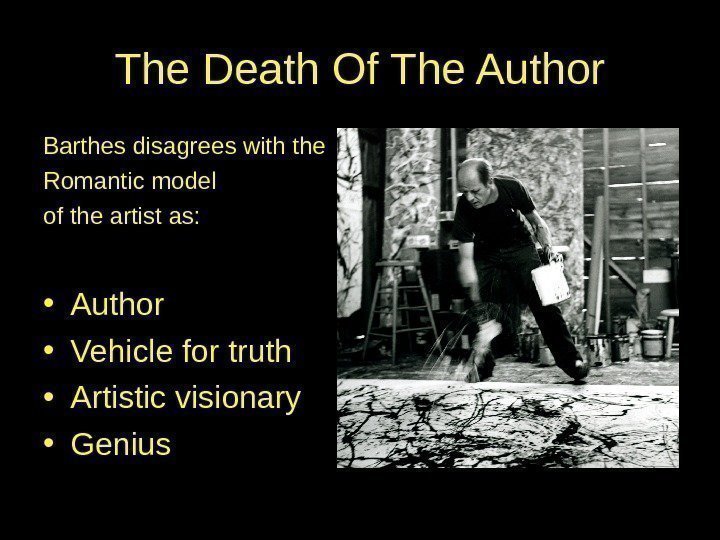
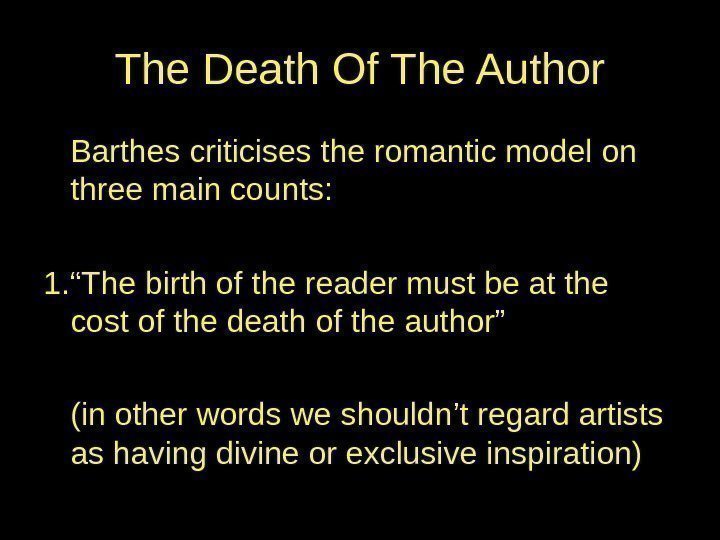
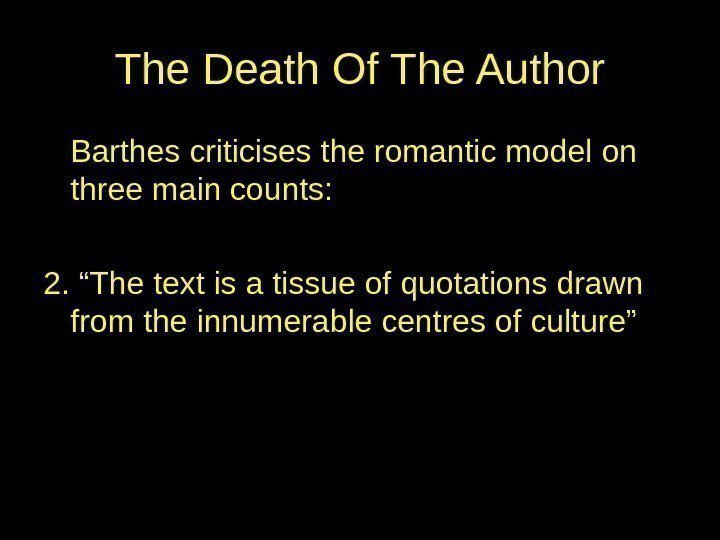
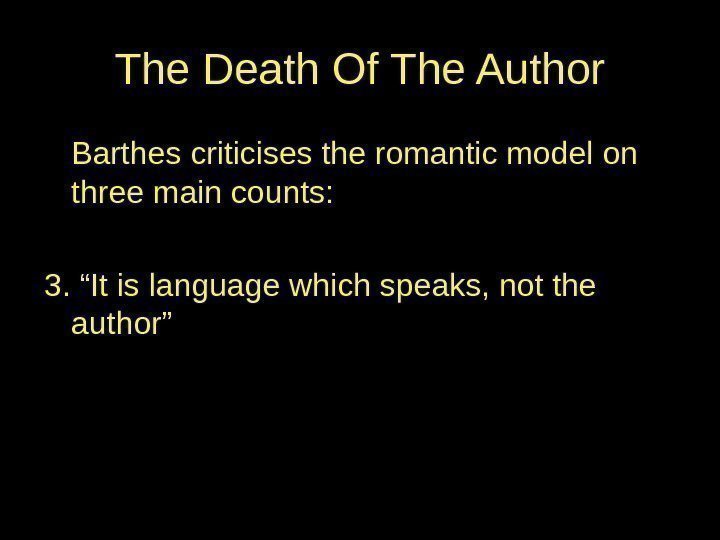
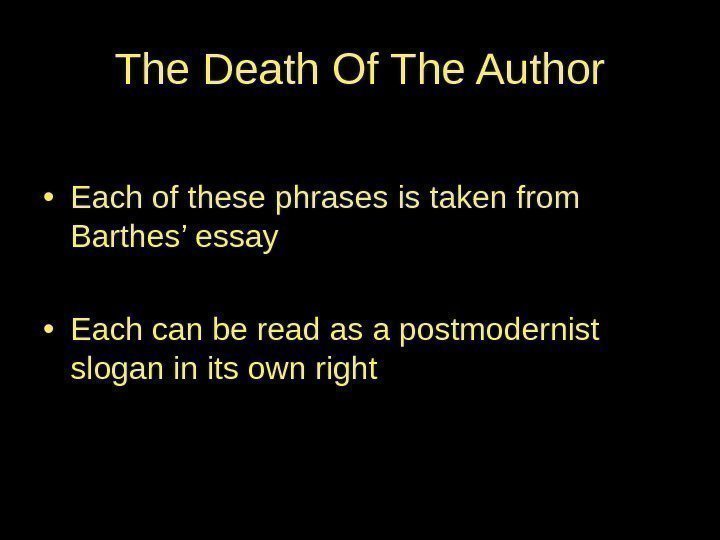
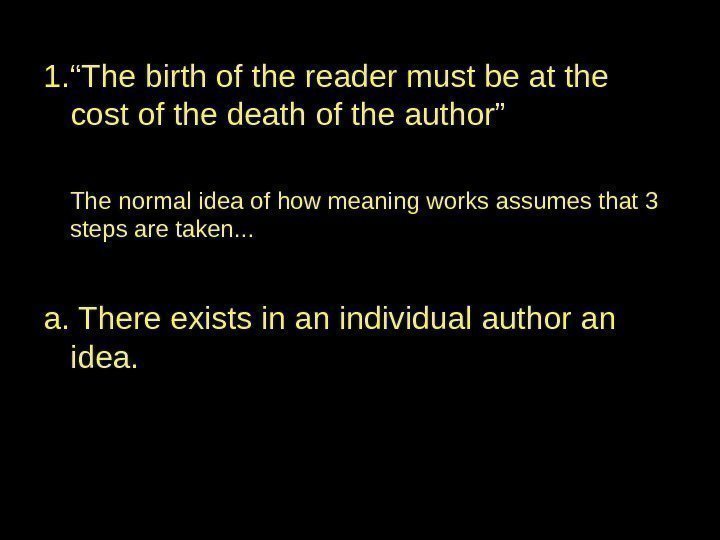
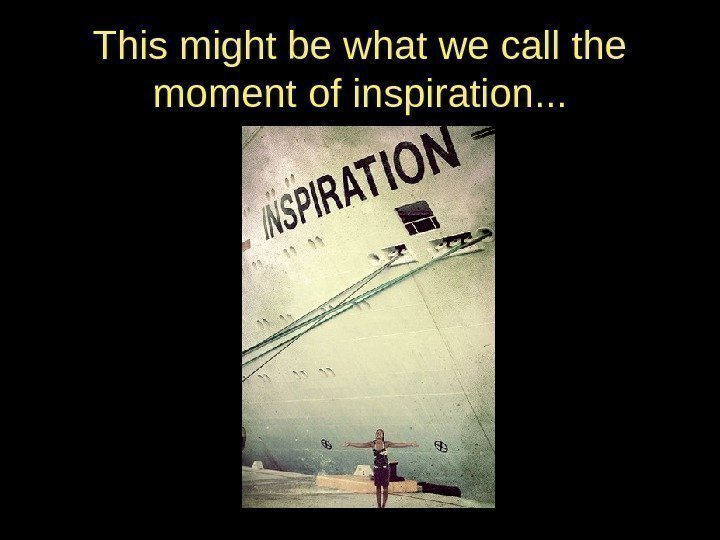
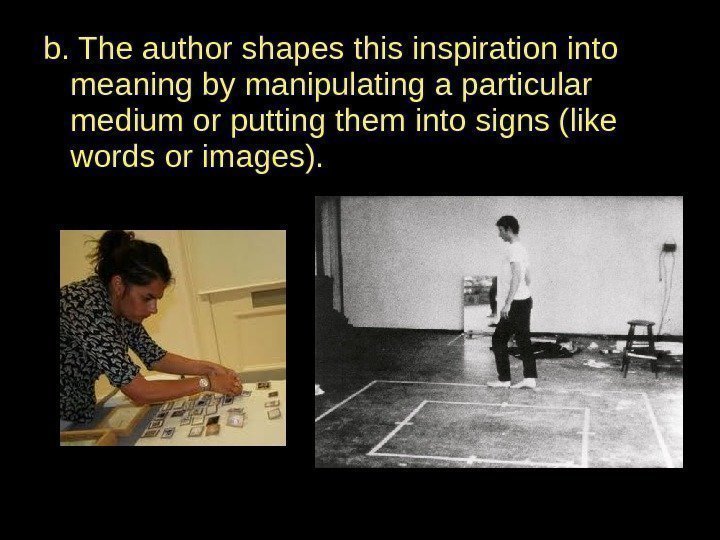
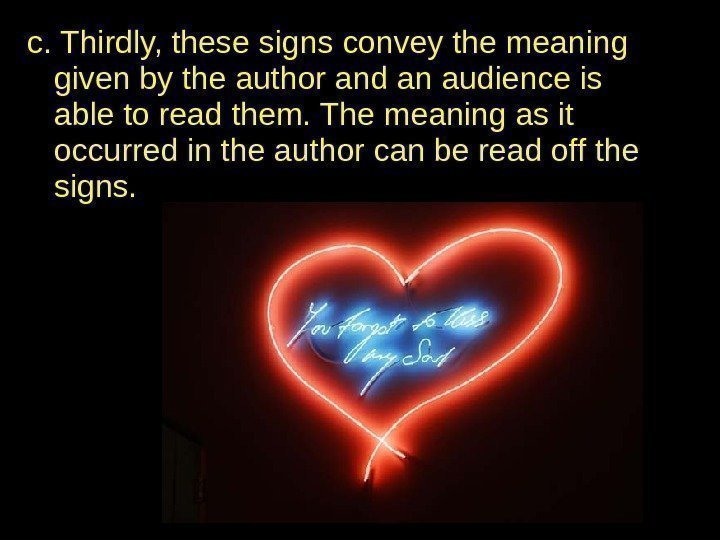
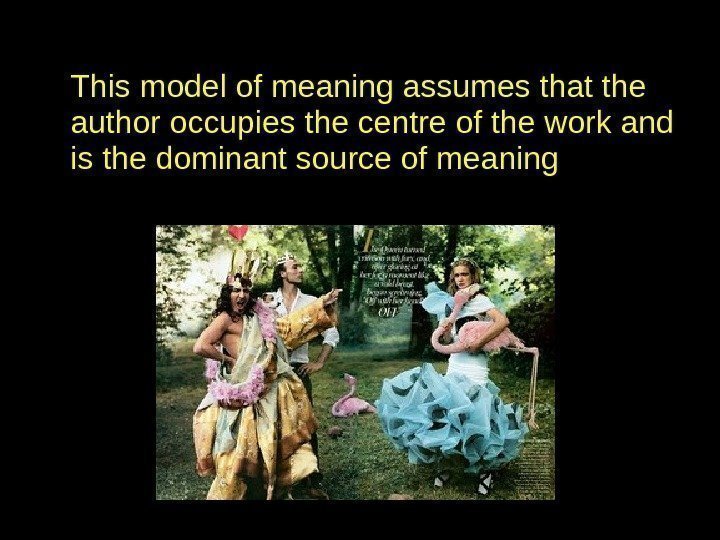
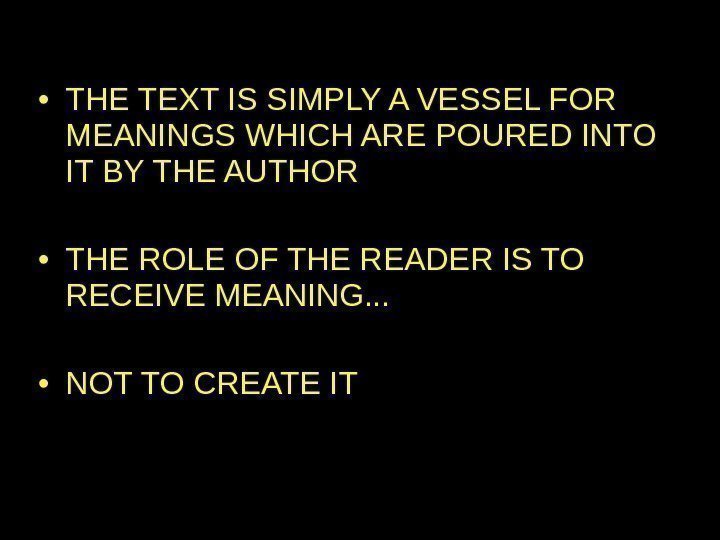
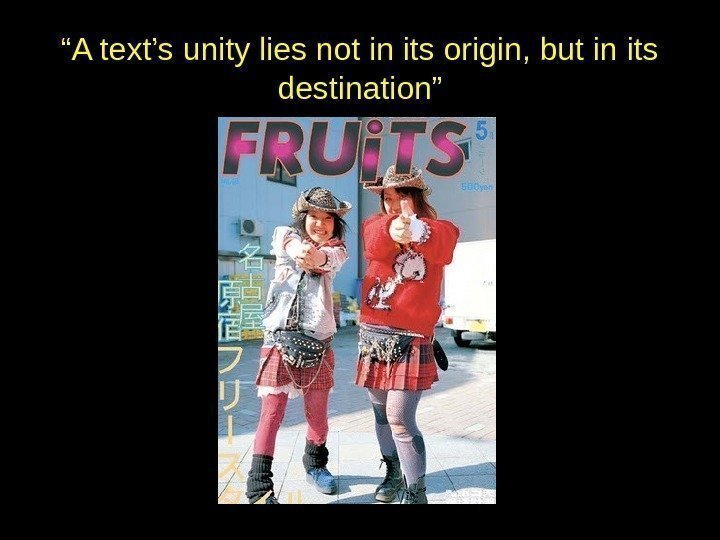
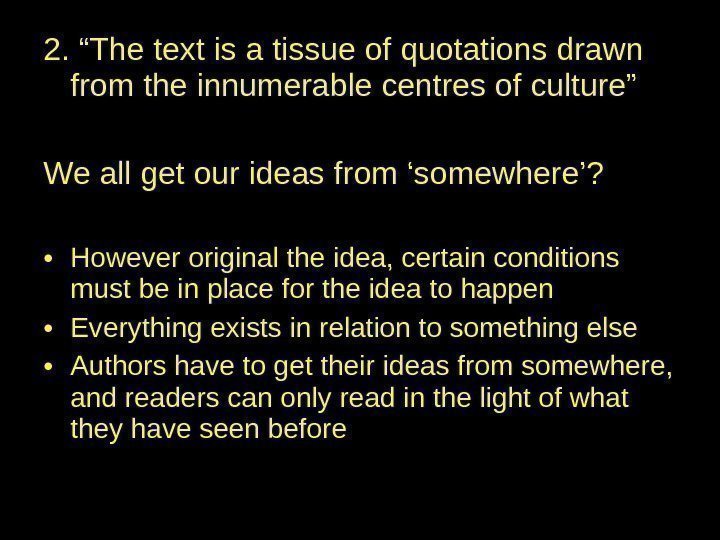
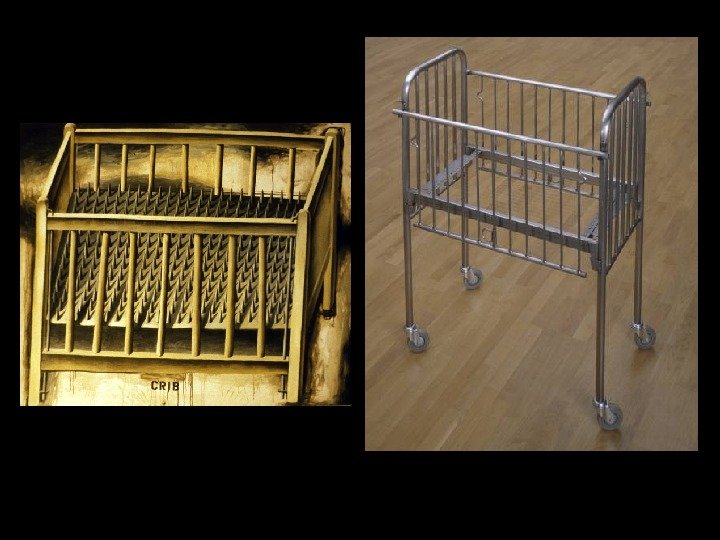
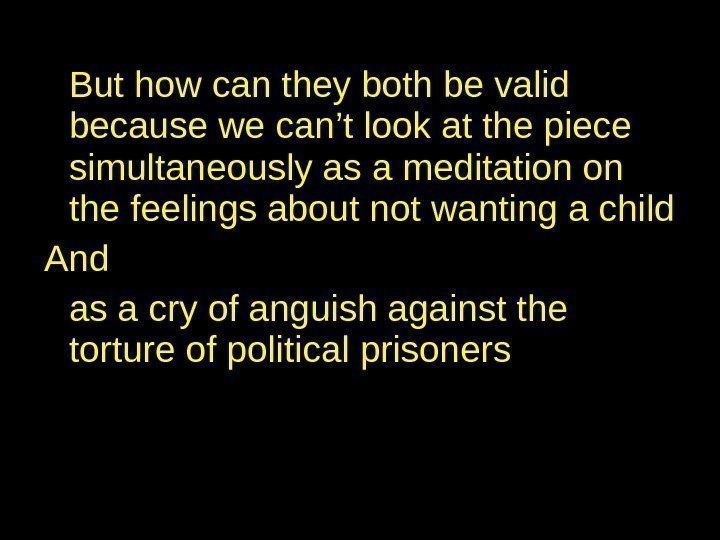
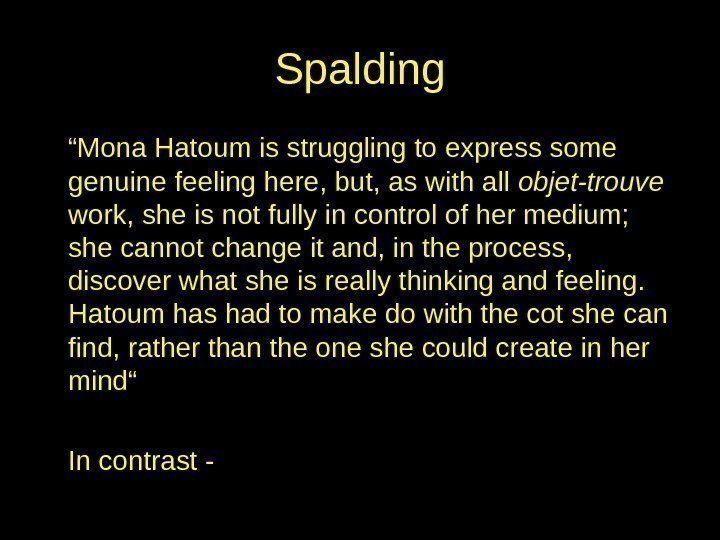
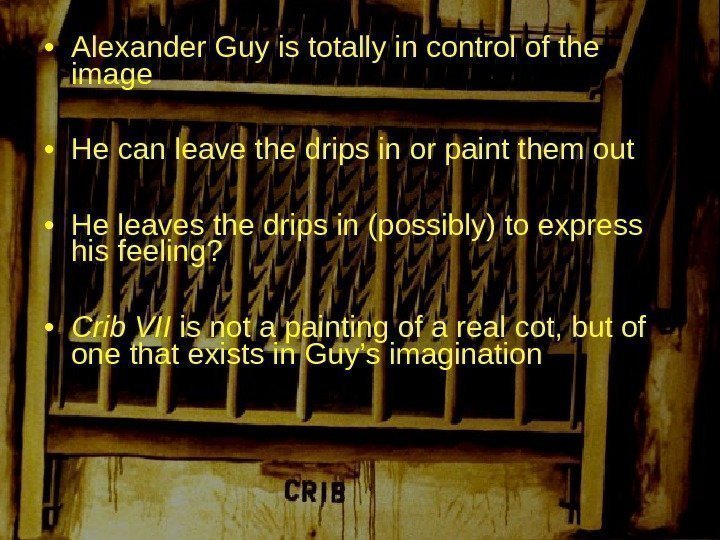
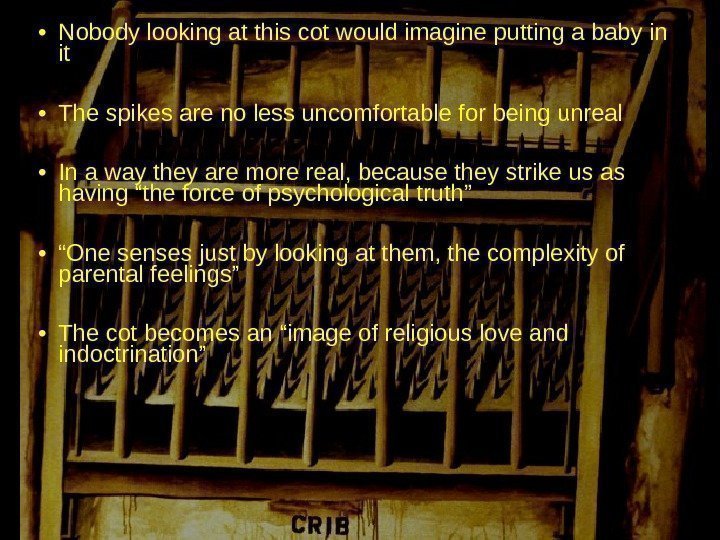
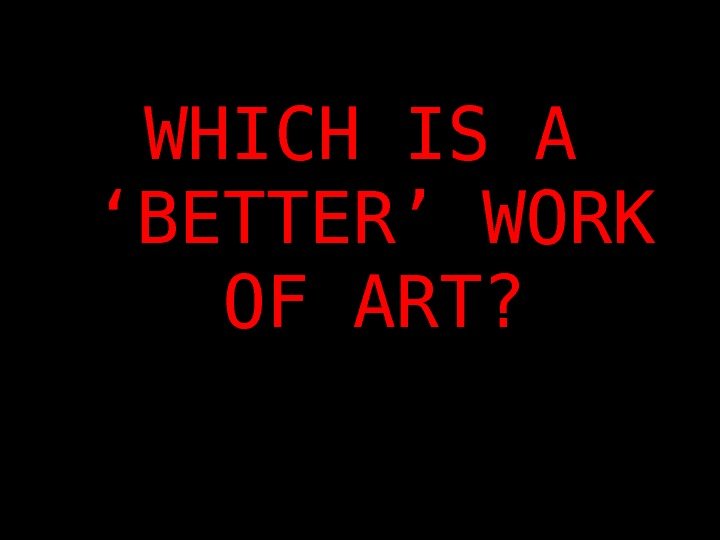
a_genuine_work_of_art_part_1.ppt
- Размер: 2.5 Мб
- Автор:
- Количество слайдов: 58
Описание презентации A Genuine Work Of Art Johannes Vermeer, по слайдам
 A Genuine Work Of Art
A Genuine Work Of Art
 Johannes Vermeer, The Milkmaid (1657– 58).
Johannes Vermeer, The Milkmaid (1657– 58).
 Henri Matiss, e Odalisque With Tamborine (1926)
Henri Matiss, e Odalisque With Tamborine (1926)
 Matthias Grűnewald, The Isenheim Altarpiece. Torment of St Anthony, panel (1512/6)
Matthias Grűnewald, The Isenheim Altarpiece. Torment of St Anthony, panel (1512/6)
 Picasso, Guernica (1937)
Picasso, Guernica (1937)
 What qualities distinguish a ‘genuine’ work of art?
What qualities distinguish a ‘genuine’ work of art?
 One quality that arguably links them – that earns them the status of works of art. . .
One quality that arguably links them – that earns them the status of works of art. . .
 Maybe. . . “ The aesthetic light that appears to shine out from them” — Julian Spalding Art Critic
Maybe. . . “ The aesthetic light that appears to shine out from them” — Julian Spalding Art Critic
 Not the actual light. . .
Not the actual light. . .
 Or the spiritual intensity (although arguably both artists depicted light and dark locked in battle)
Or the spiritual intensity (although arguably both artists depicted light and dark locked in battle)
 It is the quality of light Although works of art are ‘completed by the viewer’. . . Responses to art across the centuries suggest that works of art can have very similar effects on very different people
It is the quality of light Although works of art are ‘completed by the viewer’. . . Responses to art across the centuries suggest that works of art can have very similar effects on very different people
 So what’s ‘aesthetic light’? Julian Spalding again – “ Any work of art worthy of the name has an instantaneous/simultaneous effect on first viewing. An artist might bring all sorts of feelings and thoughts into play, yet unless he or she manages to make them all contribute to one encompassing, illuminating whole, the work of art will have no heart, no ‘life’ of its own. ”
So what’s ‘aesthetic light’? Julian Spalding again – “ Any work of art worthy of the name has an instantaneous/simultaneous effect on first viewing. An artist might bring all sorts of feelings and thoughts into play, yet unless he or she manages to make them all contribute to one encompassing, illuminating whole, the work of art will have no heart, no ‘life’ of its own. ”
 The life in a work of art is, therefore, triggered in ourselves, not in the object before us — How do you feel when you look at a great work of art?
The life in a work of art is, therefore, triggered in ourselves, not in the object before us — How do you feel when you look at a great work of art?
 Julian Spalding “ More fully aware of one’s thoughts yet no longer wearied by them, more exposed to one’s emotions yet no longer drained by them, more integrated, more composed – more, in a word, conscious. It is the light of consciousness that great works of art ignite in our minds – consciousness, the nature of which, even the reason for which, scientists have not yet been able to define or explain”
Julian Spalding “ More fully aware of one’s thoughts yet no longer wearied by them, more exposed to one’s emotions yet no longer drained by them, more integrated, more composed – more, in a word, conscious. It is the light of consciousness that great works of art ignite in our minds – consciousness, the nature of which, even the reason for which, scientists have not yet been able to define or explain”
 And what was Tolstoy’s belief? Spalding (and many others before him – like Tolstoy years ago) argue that it is this quality that unites great works of art So great art: HEIGHTEN’S AWARENESS
And what was Tolstoy’s belief? Spalding (and many others before him – like Tolstoy years ago) argue that it is this quality that unites great works of art So great art: HEIGHTEN’S AWARENESS
 So what about found objects?
So what about found objects?
 Carl Andre , Equivalent VIII (1966 )
Carl Andre , Equivalent VIII (1966 )
 Can a urinal or a pile of bricks inspire us with a ‘heightened level of consciousness’? Arguably, you can look at them with one, but are we sharing the artist’s consciousness of these things?
Can a urinal or a pile of bricks inspire us with a ‘heightened level of consciousness’? Arguably, you can look at them with one, but are we sharing the artist’s consciousness of these things?
 The toilet maker didn’t make a urinal for any reasons to do with ‘art’ Same with the brick maker but. . .
The toilet maker didn’t make a urinal for any reasons to do with ‘art’ Same with the brick maker but. . .
 What was in Duchamp’s mind? Duchamp’s consciousness MASSIVE GAP Our consciousness
What was in Duchamp’s mind? Duchamp’s consciousness MASSIVE GAP Our consciousness
 What light emanates from these works? Found object Cast of Found object
What light emanates from these works? Found object Cast of Found object
 Are they detached from their artists because they’re ‘borrowed’ not ‘born’? House – a sentimental response? Spalding – “All artists try to make statements that transcend private associations: that is what art is – an unconditional gift to others” and – “ The greater the art is the more detached it becomes from private meanings or small social circles, and the more freely it stands as its own interpreter, to speak to all of humankind”
Are they detached from their artists because they’re ‘borrowed’ not ‘born’? House – a sentimental response? Spalding – “All artists try to make statements that transcend private associations: that is what art is – an unconditional gift to others” and – “ The greater the art is the more detached it becomes from private meanings or small social circles, and the more freely it stands as its own interpreter, to speak to all of humankind”
 “ They are not images wrought out of feelings and thoughts and crystallized into consciousness” (Spalding) By this criteria House does not, therefore, even begin to be a work of art …?
“ They are not images wrought out of feelings and thoughts and crystallized into consciousness” (Spalding) By this criteria House does not, therefore, even begin to be a work of art …?
 Creating one’s own image vs. using a found object An example
Creating one’s own image vs. using a found object An example
 Alexander Guy, Crib. VII (1992)
Alexander Guy, Crib. VII (1992)
 Mona Hatoum, Incommunicado (1993)
Mona Hatoum, Incommunicado (1993)
 Alexander Guy (1962 — ) • Studied painting in Scotland where older studio traditions lasted longer than in England • Subject is distilled from personal experience and thought • He once attended a wedding at which a blood stained sheet (proving the bride’s virginity) was shown to the guests • This led to a series of paintings of human irons, chastity belts and man-traps
Alexander Guy (1962 — ) • Studied painting in Scotland where older studio traditions lasted longer than in England • Subject is distilled from personal experience and thought • He once attended a wedding at which a blood stained sheet (proving the bride’s virginity) was shown to the guests • This led to a series of paintings of human irons, chastity belts and man-traps
 Quote from the artist: “ If Mary had slept with Joseph and lost her virginity, instead of a night of passion with God, then life would have been a lot simpler for everyone, especially women over the last 2000 years” Feminist point of view? Image of religious love and indoctrination?
Quote from the artist: “ If Mary had slept with Joseph and lost her virginity, instead of a night of passion with God, then life would have been a lot simpler for everyone, especially women over the last 2000 years” Feminist point of view? Image of religious love and indoctrination?
 Mona Hatoum (1952 — ) • Brought up in Beirut – moved to Britain at the outbreak of civil war in 1975 • As a student she made work that might be labelled ‘Feminist’ (transforming the ‘supportive’ in to the ‘threatening’) • Made sculptures that used found objects and subverted meaning • Modernist
Mona Hatoum (1952 — ) • Brought up in Beirut – moved to Britain at the outbreak of civil war in 1975 • As a student she made work that might be labelled ‘Feminist’ (transforming the ‘supportive’ in to the ‘threatening’) • Made sculptures that used found objects and subverted meaning • Modernist
 They both end up as images in our minds but. . .
They both end up as images in our minds but. . .
 WHICH IS A ‘BETTER’ WORK OF ART?
WHICH IS A ‘BETTER’ WORK OF ART?
 One is a painting One is a modified found object They both end up as images in our minds so arguably they can be compared, (can’t they? )
One is a painting One is a modified found object They both end up as images in our minds so arguably they can be compared, (can’t they? )
 Incommunicado Nasty sensation when we realise that the cot has been tampered with (especially as we don’t notice this straight away) In our imagination: We might imagine a baby being put in and sliced by the wires We might imagine trying to save the baby from suffering
Incommunicado Nasty sensation when we realise that the cot has been tampered with (especially as we don’t notice this straight away) In our imagination: We might imagine a baby being put in and sliced by the wires We might imagine trying to save the baby from suffering
 Incommunicado We’d have to be perverse to imagine keeping on ‘slicing’ a baby The impression the piece gives then is an image of what?
Incommunicado We’d have to be perverse to imagine keeping on ‘slicing’ a baby The impression the piece gives then is an image of what?
 A quote from Tate: “ The bare metal bars of this child’s cot resemble those of a prison cell, while the springs have been replaced by taut cheese wires. Hatoum has transformed a symbol of comfort and care into a claustrophobic space suggesting a place of incarceration and torture. The sculpture evokes themes of child abuse, as well as the suffering experienced by political prisoners. ”
A quote from Tate: “ The bare metal bars of this child’s cot resemble those of a prison cell, while the springs have been replaced by taut cheese wires. Hatoum has transformed a symbol of comfort and care into a claustrophobic space suggesting a place of incarceration and torture. The sculpture evokes themes of child abuse, as well as the suffering experienced by political prisoners. ”
 Emotionalism? Political prisoners are not mute babies – often the reason for their plight is because of their effectiveness as communicators? Does looking at it increase our sympathy for or our understanding of the plight of the countless political prisoners around the world in any way?
Emotionalism? Political prisoners are not mute babies – often the reason for their plight is because of their effectiveness as communicators? Does looking at it increase our sympathy for or our understanding of the plight of the countless political prisoners around the world in any way?
 Julian Spalding (again) “ Do we pat ourselves and the artist on the back for being politically correct and walk on” Do we take away an image of a baby being sliced up or do we Feel uncomfortable at the suggested cruelty in something we associate with protection and babies? What has this do with suffering prisoners?
Julian Spalding (again) “ Do we pat ourselves and the artist on the back for being politically correct and walk on” Do we take away an image of a baby being sliced up or do we Feel uncomfortable at the suggested cruelty in something we associate with protection and babies? What has this do with suffering prisoners?
 Spalding : “My instinct is that the image is more about the parent than the child and a personal statement rather than a political one” He means its a piece about not wanting to have a child for good reason – for not wanting to put it through what the parent went through Prison/torture chamber then, relates to both parent and child
Spalding : “My instinct is that the image is more about the parent than the child and a personal statement rather than a political one” He means its a piece about not wanting to have a child for good reason – for not wanting to put it through what the parent went through Prison/torture chamber then, relates to both parent and child
 So we don’t have to imagine a baby been sliced up because its about NOT putting a baby in there Are both interpretations valid? Barthes would say?
So we don’t have to imagine a baby been sliced up because its about NOT putting a baby in there Are both interpretations valid? Barthes would say?
 The Death Of The Author Barthes disagrees with the Romantic model of the artist as: • Author • Vehicle for truth • Artistic visionary • Genius
The Death Of The Author Barthes disagrees with the Romantic model of the artist as: • Author • Vehicle for truth • Artistic visionary • Genius
 The Death Of The Author Barthes criticises the romantic model on three main counts: 1. “ The birth of the reader must be at the cost of the death of the author” (in other words we shouldn’t regard artists as having divine or exclusive inspiration)
The Death Of The Author Barthes criticises the romantic model on three main counts: 1. “ The birth of the reader must be at the cost of the death of the author” (in other words we shouldn’t regard artists as having divine or exclusive inspiration)
 The Death Of The Author Barthes criticises the romantic model on three main counts: 2. “The text is a tissue of quotations drawn from the innumerable centres of culture”
The Death Of The Author Barthes criticises the romantic model on three main counts: 2. “The text is a tissue of quotations drawn from the innumerable centres of culture”
 The Death Of The Author Barthes criticises the romantic model on three main counts: 3. “It is language which speaks, not the author”
The Death Of The Author Barthes criticises the romantic model on three main counts: 3. “It is language which speaks, not the author”
 The Death Of The Author • Each of these phrases is taken from Barthes’ essay • Each can be read as a postmodernist slogan in its own right
The Death Of The Author • Each of these phrases is taken from Barthes’ essay • Each can be read as a postmodernist slogan in its own right
 1. “ The birth of the reader must be at the cost of the death of the author” The normal idea of how meaning works assumes that 3 steps are taken. . . a. There exists in an individual author an idea.
1. “ The birth of the reader must be at the cost of the death of the author” The normal idea of how meaning works assumes that 3 steps are taken. . . a. There exists in an individual author an idea.
 This might be what we call the moment of inspiration. . .
This might be what we call the moment of inspiration. . .
 b. The author shapes this inspiration into meaning by manipulating a particular medium or putting them into signs (like words or images).
b. The author shapes this inspiration into meaning by manipulating a particular medium or putting them into signs (like words or images).
 c. Thirdly, these signs convey the meaning given by the author and an audience is able to read them. The meaning as it occurred in the author can be read off the signs.
c. Thirdly, these signs convey the meaning given by the author and an audience is able to read them. The meaning as it occurred in the author can be read off the signs.
 This model of meaning assumes that the author occupies the centre of the work and is the dominant source of meaning
This model of meaning assumes that the author occupies the centre of the work and is the dominant source of meaning
 • THE TEXT IS SIMPLY A VESSEL FOR MEANINGS WHICH ARE POURED INTO IT BY THE AUTHOR • THE ROLE OF THE READER IS TO RECEIVE MEANING. . . • NOT TO CREATE IT
• THE TEXT IS SIMPLY A VESSEL FOR MEANINGS WHICH ARE POURED INTO IT BY THE AUTHOR • THE ROLE OF THE READER IS TO RECEIVE MEANING. . . • NOT TO CREATE IT
 “ A text’s unity lies not in its origin, but in its destination”
“ A text’s unity lies not in its origin, but in its destination”
 2. “The text is a tissue of quotations drawn from the innumerable centres of culture” We all get our ideas from ‘somewhere’? • However original the idea, certain conditions must be in place for the idea to happen • Everything exists in relation to something else • Authors have to get their ideas from somewhere, and readers can only read in the light of what they have seen before
2. “The text is a tissue of quotations drawn from the innumerable centres of culture” We all get our ideas from ‘somewhere’? • However original the idea, certain conditions must be in place for the idea to happen • Everything exists in relation to something else • Authors have to get their ideas from somewhere, and readers can only read in the light of what they have seen before

 But how can they both be valid because we can’t look at the piece simultaneously as a meditation on the feelings about not wanting a child And as a cry of anguish against the torture of political prisoners
But how can they both be valid because we can’t look at the piece simultaneously as a meditation on the feelings about not wanting a child And as a cry of anguish against the torture of political prisoners
 Spalding “ Mona Hatoum is struggling to express some genuine feeling here, but, as with all objet-trouve work, she is not fully in control of her medium; she cannot change it and, in the process, discover what she is really thinking and feeling. Hatoum has had to make do with the cot she can find, rather than the one she could create in her mind“ In contrast —
Spalding “ Mona Hatoum is struggling to express some genuine feeling here, but, as with all objet-trouve work, she is not fully in control of her medium; she cannot change it and, in the process, discover what she is really thinking and feeling. Hatoum has had to make do with the cot she can find, rather than the one she could create in her mind“ In contrast —
 • Alexander Guy is totally in control of the image • He can leave the drips in or paint them out • He leaves the drips in (possibly) to express his feeling? • Crib VII is not a painting of a real cot, but of one that exists in Guy’s imagination
• Alexander Guy is totally in control of the image • He can leave the drips in or paint them out • He leaves the drips in (possibly) to express his feeling? • Crib VII is not a painting of a real cot, but of one that exists in Guy’s imagination
 • Nobody looking at this cot would imagine putting a baby in it • The spikes are no less uncomfortable for being unreal • In a way they are more real, because they strike us as having “the force of psychological truth” • “ One senses just by looking at them, the complexity of parental feelings” • The cot becomes an “image of religious love and indoctrination”
• Nobody looking at this cot would imagine putting a baby in it • The spikes are no less uncomfortable for being unreal • In a way they are more real, because they strike us as having “the force of psychological truth” • “ One senses just by looking at them, the complexity of parental feelings” • The cot becomes an “image of religious love and indoctrination”
 WHICH IS A ‘BETTER’ WORK OF ART?
WHICH IS A ‘BETTER’ WORK OF ART?
